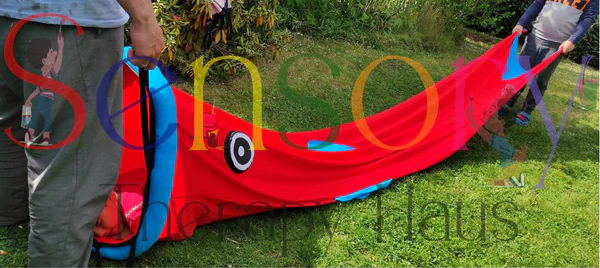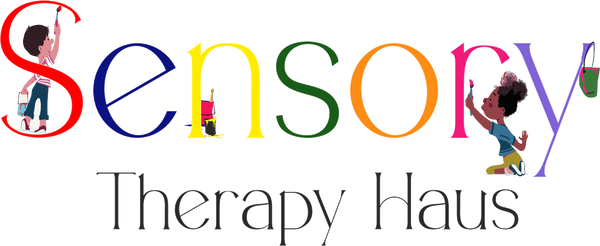
Playfulness and ASD
Share
Playfulness and ASD
Playfulness
Playfulness can be defined as a tendency to play games. In other words, it is the child's or person's approach to a game or an activity. Play liking is only one aspect of the game. Other aspects of the game are game preferences and game skills. Playfulness is intrinsic motivation, inner control, and detachment from reality. The

person plays only because he/she wants to play the game, because he/she has intrinsic motivation. The process of the game is important rather than the product obtained after the game. Intrinsic control consists of one's actions and/or at least the means that they are responsible for the consequences. People who play games can decide when to play and when the game ends. Even if there are rules within the game, the rules can be adapted to the needs of the people playing the game. The ability to escape from reality refers to how close one prefers to be to reality, meaning that he/she is playing the game.
Sensorimotor Gaming
In typically developing children, sensorimotor or physical play can be real or also involves the manipulation and association of symbolic objects may/may not include. Sensorimotor play may involve object manipulation, but these objects will be easily delimited, easily transported or manipulated are not objects. It requires a large space. Without imitation or social rules, it involves repetition of physical activities (especially gross motor activities). It is especially common up to 2 years of age and when new skills are learned. Grappling, somersaulting games such as rolling and tumbling are sensorimotor games that boys especially like. Children with ASD prefer sensorimotor games more.
Autism Spectrum Disorder and Play
Repetitive and restricted with impaired social communication and interaction ASD, defined by behaviors and interests, is heterogeneous in terms of phenotype and genotype. Symptoms begin in the first years of life and last throughout life. Although the importance of early diagnosis and interventions is known, difficulties are experienced in diagnosis under the age of 3 years. There are difficulties in making a diagnosis under the age of 3 years. However, the diagnostic criteria for ASD during play with objects. For example, during play with objects in children with ASD restricted, repetitive and stereotyped behaviors, interests and activities may be observed. Absence or delayed symbolic play is one of the diagnostic criteria for ASD.

Object Play
In typically developing children, object play allows the child to manipulate objects when the child picks up an object. Generally, it is usually mouthing, grasping, holding, pulling, throwing, hitting, shaking the object is seen in the form of Playing with an object continues until a new object arrives. Acquiring the sensory input of the object enables to understand what the object is for; other In other words, in object play, the child learns to "understand the equivalent of the object". Object play decreases towards the end of the age of 1 year. In children with ASD, play with objects continues after the age of 1 year. Only playing with a few objects, holding certain objects in your hand all the time, playing with all objects playing in the same way, fixating on the parts of objects instead of the whole (car focusing on the wheels rather than on the game itself), preventing the transition to relational play behaviour patterns continue. In addition, children with ASD are more likely to have for example, closing your eyes and turning around with a toy aeroplane in your hand can be seen giving sensory stimuli.
Relational Play
Relational play begins to develop around 9 months in typically developing children starts. Initially they cannot use objects functionally. For example; tower made of cubes instead, they knock the cubes together. In this way, they can see which objects are related to each other and learns to use the objects around them effectively. Relational play, praxis and fine motor skills are necessary to associate objects meaningfully. As the child starts to use the objects, he/she will be able to use the objects such as throwing the objects into the box, separating the objects, etc. Begin to develop more complex skills. Through trial and error in relational play Schemata related to objects will also be formed in the mind. Relational play is more rigid and repetitive in children with ASD. Different objects They arrange objects instead of experiencing their use. Self-stimulating behaviour prevents him from playing with toys for their intended purpose.
Functional Play
Functional play in typically developing children develops between 9 and 12 months of age and Around 15 months it becomes dominant. It is also called presymbolic play. This game level, objects are now used for their intended purpose (spoon for feeding). Initially, functional play focuses on the child (drinking water from an empty glass), then passes to the toy (making the toy drink water from an empty glass) (as a representative game named) and involves the sequencing of multiple movements on an object (self feeding, feeding the mother, feeding the toy). Functional play, play with the object is an added form of social communication (the child uses the object in the same way as society uses the object). starts, takes the spoon to his mouth, not to his leg). In this game, still concrete of objects, Although the object has a physical use, the use of the object is based on social norms instead of the use of the object. appropriate use also develops. In children with ASD; object-centred functional play, person-centred It is almost on a par with functional play. However, typically developing object-centred functional play is more common in children. Object-centred Functional play is necessary for the transition to symbolic play. Also with ASD Functional play in children is less elaborate, varied and holistic. Children's repetitive and ritualistic play with objects can interfere with functional play, because the child for the object has an unusual meaning.

Studies and Findings
A study conducted by Tae-Hyung et al. in 2014, aged between 40 and 80 months 128 typically developing children, 69 of whom were boys. playfulness and sensory processing skills in children according to age and gender in the study in which the relationship between boys and girls was analysed, it was found that younger boys were more likely to be girls and younger boys were more likely to be girls. 66 were found to be more playful than their children. Also; sensory A relationship was found between processing and playfulness.
In their study conducted in 2009, Jasmin et al. examined the effect of sensori-motor skills on activities of daily living in 35 children with ASD aged 3-4 years. As a result of the study, it was found that children with ASD had limitations in sensory processing 65 and motor skills and activities of daily living. It is stated that the retardation in their activities is due to weakness in grasping and building, fine motor skills and sensory processing skills.
In a study conducted by White et al. in 2007, motor and process skills and sensory processing skills of 68 children were analysed. It was found that children with problems in sensory processing skills had difficulties in daily life activities and that motor skills, which enable successful completion of tasks, were more important than process skills such as attention and organisation. skills are related to visual, vestibular and tactile processing. In addition, it was emphasised that grasping, stabilising and holding objects, adjusting the speed and power of object use are related to visual, vestibular and tactile processing.
